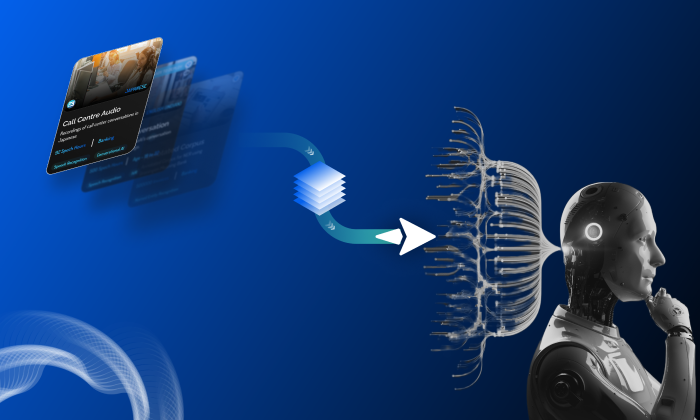Explore the use case of wake word models in healthcare settings
Wake Word
Healthcare AI
Patient Interaction
FutureBeeAI’s clinical-grade wake word models empower healthcare professionals to enhance patient care, streamline workflows, and boost accessibility through hands-free voice interactions.
Wake-word detection is a crucial component of voice-activated systems in healthcare, enabling clinicians to interact with devices using simple voice commands like "Hey MedBot" or "OK Google." This technology is vital for:
- Efficiency: Reduces manual data entry time, which is especially critical in high-pressure environments like emergency rooms and during patient rounds.
- Accessibility: Makes technology more usable for individuals with disabilities, enhancing accessibility across healthcare settings.
- Engagement: Allows patients to use their voices to interact with healthcare systems, improving the patient experience and satisfaction.
FutureBeeAI Solution Snapshot
- OTS vs. Custom Options: Available via our YUGO platform, offering both off-the-shelf and fully custom datasets tailored to specific healthcare needs.
- 2-Layer QA: Our comprehensive QA process ensures that both transcripts and audio meet clinical-grade standards, guaranteeing reliable performance.
- Secure Storage: We store all data on HIPAA-compliant, encrypted S3 servers, ensuring patient data protection and privacy.
Technical Pipeline of Wake-Word Detection for Clinical Environments
Wake-word models combine signal processing, machine learning, and natural language processing to ensure efficient performance in clinical environments:
- Audio Input: The system continuously listens for wake words, converting audio into digital signals.
- Feature Extraction: Acoustic features, such as frequency patterns, are extracted to identify wake words with high precision.
- Model Training: FutureBeeAI’s models use extensive datasets, such as 50k+ samples per wake word across 100+ languages, to ensure robustness across diverse speaker profiles and environments.
- Activation and Response: Once a wake word is detected, the system activates to perform tasks or provide information in real-time.
Key Metrics & Calibration
- False-Acceptance Rate (FAR) & False-Rejection Rate (FRR): These metrics are essential for achieving high accuracy and minimizing errors in clinical settings.
- Latency Targets: On-device models are optimized for response times of less than 100 ms to ensure seamless interaction.
- Model Size & Energy Constraints: Efficient quantization is crucial to keep models lightweight and suitable for on-device deployment.
On-device vs. Cloud Trade-offs
- Model Size: On-device models are compact (typically a few MBs), designed for efficient operation without compromising performance.
- Energy Efficiency: On-device models are optimized for energy efficiency, making them ideal for battery-operated medical devices.
- Privacy: On-device processing ensures better data security by keeping sensitive patient information locally, reducing the risk of data breaches.
Acoustic Robustness Strategies
- Data Augmentation: Techniques such as noise overlay and reverberation simulate various real-world conditions, improving model robustness in noisy clinical environments.
- Threshold Calibration: Custom thresholds are tailored to specific environments (e.g., emergency rooms, patient rooms) to enhance performance.
Noise Robustness, HIPAA Compliance & Deployment Best Practices
Implementing wake-word models in healthcare presents unique challenges:
- Noise Robustness: FutureBeeAI’s datasets cover 20+ noise profiles, ensuring models perform well in real-world healthcare environments where noise is prevalent.
- Privacy & Security: We adhere to HIPAA standards, ensuring patient data is anonymized and fully compliant with privacy regulations.
- User Training: Proper training for healthcare professionals is essential for effective adoption of voice-activated systems. Providing clear instructions and ongoing support increases user confidence and system effectiveness.
Top 3 Implementation Best Practices
- Regular Retraining: Incorporate live retraining pipelines to continuously improve model performance and adapt to evolving clinical speech patterns.
- Active Learning Loops: Enhance model accuracy by integrating real-time data into the learning process, allowing the system to evolve based on user feedback and real-world interactions.
- Environment-Specific Calibration: Adjust model thresholds and calibration settings based on specific environmental factors, ensuring optimal performance in varied healthcare settings.
Real-World Impact: Mini-case Study
At Mercy Hospital, deploying a custom "Hey MedBot" dataset reduced nurse charting time by 15%, significantly enhancing workflow efficiency and allowing clinicians to focus more on patient care.
Next Steps
To explore how FutureBeeAI can support your wake-word model needs with our comprehensive, clinical-grade datasets, download our sample dataset, request a custom demo, or explore our public benchmarks.
What Else Do People Ask?
Related AI Articles
Browse Matching Datasets
Acquiring high-quality AI datasets has never been easier!!!
Get in touch with our AI data expert now!








